Hydrogen Peroxide
Description
Hydrogen peroxide (H₂O₂) is a chemical compound composed of two hydrogen atoms and two oxygen atoms. It is a pale blue liquid in its pure form but appears colorless when diluted. Hydrogen peroxide is a strong oxidizing agent and has a variety of uses across different industries due to its antiseptic, bleaching, and disinfecting properties.
### Key Applications of Hydrogen Peroxide
1. **Medical and Healthcare Uses**:
– **Antiseptic**: Hydrogen peroxide is widely used as an antiseptic to clean wounds, cuts, and abrasions. It works by releasing oxygen when it comes into contact with the enzyme catalase in blood, producing bubbles that help to remove dead tissue and cleanse the area.
– **Disinfectant**: In healthcare settings, hydrogen peroxide is used to disinfect surfaces, surgical tools, and equipment. It effectively kills bacteria, viruses, and fungi, making it a critical component in infection control.
2. **Personal Care**:
– **Teeth Whitening**: Hydrogen peroxide is commonly found in teeth-whitening products, including toothpaste and whitening strips. It acts as a bleaching agent, helping to remove stains and brighten teeth.
– **Mouthwash**: Diluted hydrogen peroxide can be used as a mouth rinse to kill bacteria, reduce bad breath, and help in the treatment of oral infections like gingivitis.
– **Hair Bleaching**: Hydrogen peroxide is also used in hair dyes and bleaching products. It breaks down the natural pigment in hair, lightening its color.
3. **Household Cleaning**:
– **Surface Cleaner**: Hydrogen peroxide is used as a general-purpose cleaner in households. It can be used to clean countertops, sinks, and bathroom surfaces, where it disinfects and removes stains.
– **Laundry**: It is used as a bleaching agent in laundry to remove stains and brighten fabrics. Unlike chlorine bleach, hydrogen peroxide is less harsh and can be used on colored fabrics without causing damage.
4. **Industrial Applications**:
– **Pulp and Paper Industry**: Hydrogen peroxide is used as a bleaching agent in the pulp and paper industry. It helps to whiten paper without the use of chlorine-based chemicals, making it an environmentally friendlier option.
– **Textile Industry**: In the textile industry, hydrogen peroxide is used for bleaching natural fibers like cotton and wool. It provides a consistent and safe bleaching process that is less damaging to the fibers than other methods.
– **Chemical Manufacturing**: Hydrogen peroxide is used as an oxidizer in the production of various chemicals, including peracetic acid, which is used as a disinfectant and sanitizer in the food industry.
5. **Water and Wastewater Treatment**:
– **Disinfection**: Hydrogen peroxide is used in water treatment plants to disinfect drinking water and wastewater. It helps to remove organic impurities and kill harmful microorganisms without leaving toxic residues.
– **Odor Control**: It is also used in wastewater treatment for odor control by oxidizing the compounds responsible for unpleasant smells.
6. **Agriculture**:
– **Seed Treatment**: Hydrogen peroxide is used to treat seeds before planting to disinfect them and promote faster germination.
– **Hydroponics**: In hydroponic systems, hydrogen peroxide is added to the water to increase oxygen levels and prevent the growth of harmful pathogens in the nutrient solution.
7. **Food Industry**:
– **Food Processing**: Hydrogen peroxide is used as a sterilizing agent in food packaging, particularly for aseptic packaging of milk, juice, and other beverages. It helps to eliminate bacteria and extend the shelf life of the products.
– **Food Bleaching**: It is also used to bleach food products like flour and starch to improve their appearance.
### Safety and Handling
– **Concentration Levels**: Hydrogen peroxide is available in various concentrations, from 3% for household use to 35% or higher for industrial applications. The concentration level determines its potency and the precautions required for handling.
– **Hazards**: Hydrogen peroxide is a strong oxidizer and can cause skin irritation or burns at higher concentrations. It should be handled with care, using appropriate protective equipment such as gloves and safety goggles. Ingesting or inhaling concentrated hydrogen peroxide can be harmful or even fatal.
– **Decomposition**: Hydrogen peroxide decomposes over time, breaking down into water and oxygen. This reaction is accelerated by light and heat, so it is usually stored in dark, cool places and in opaque containers to maintain its stability.
### Environmental Impact
Hydrogen peroxide is considered environmentally friendly because it decomposes into water and oxygen, leaving no harmful residues. This makes it a preferable choice for applications where environmental impact is a concern, such as in water treatment and food processing.
### Physical and Chemical Properties
– **Appearance**: Colorless liquid
– **Odor**: Slightly sharp or pungent
– **Solubility**: Miscible with water in all proportions
– **Boiling Point**: Approximately 150.2°C (302.4°F) for 100% pure hydrogen peroxide
– **Melting Point**: -0.43°C (31.23°F)
Hydrogen peroxide is a versatile and powerful oxidizing agent with numerous applications across medical, industrial, and domestic fields. Its effectiveness as a disinfectant, bleach, and antiseptic, coupled with its environmental friendliness, makes it an essential chemical in many processes. However, due to its reactive nature, it must be handled with care, especially in higher concentrations.

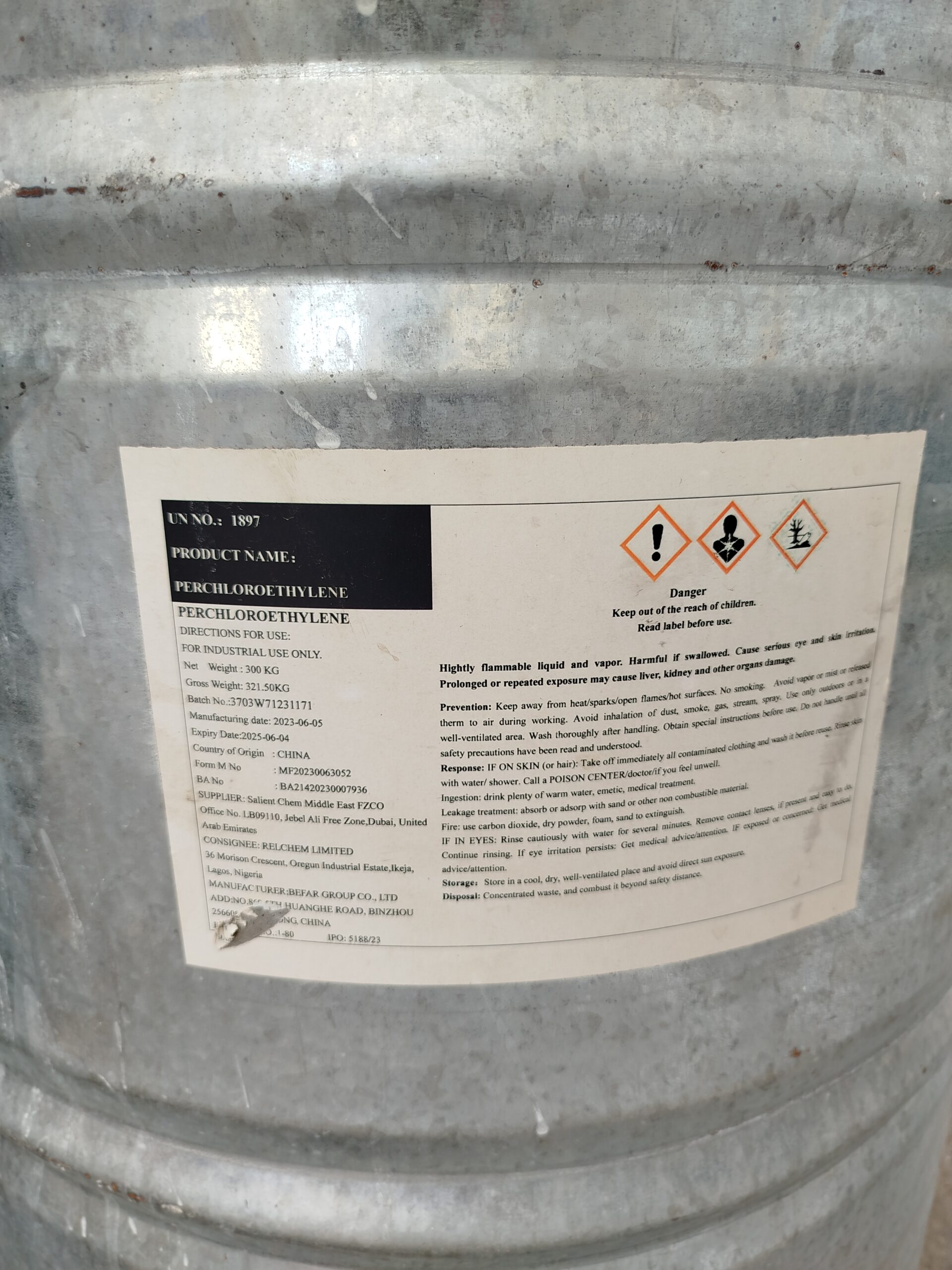
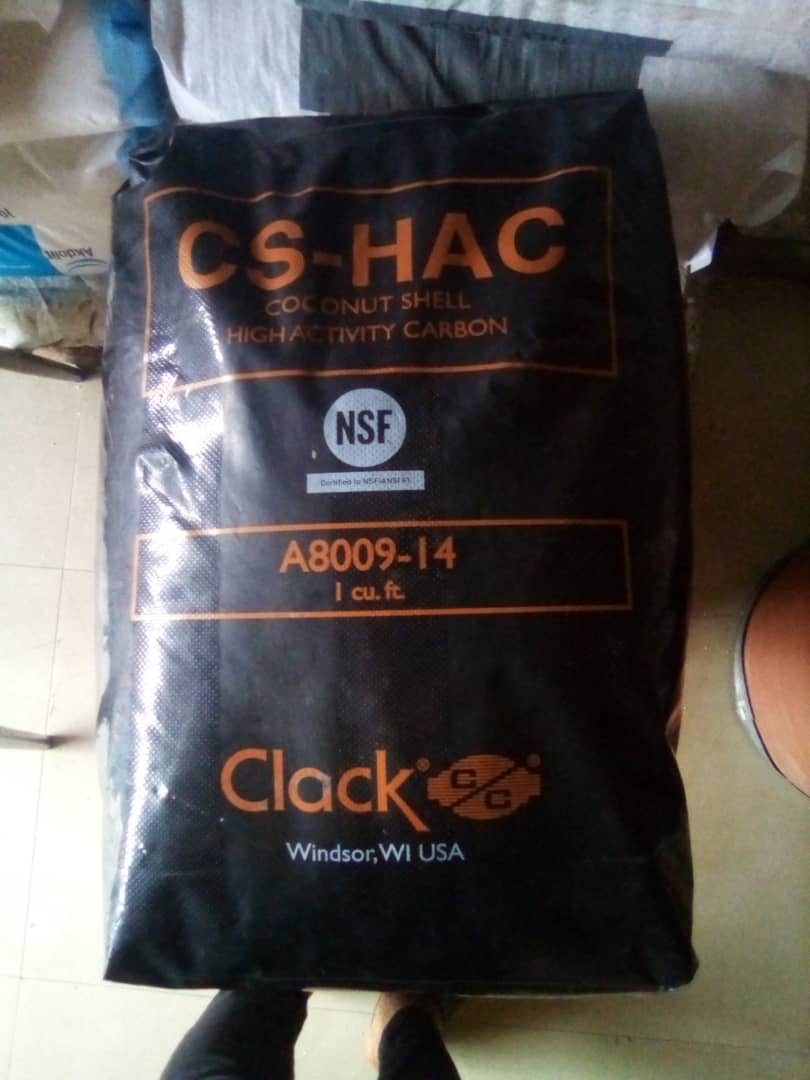

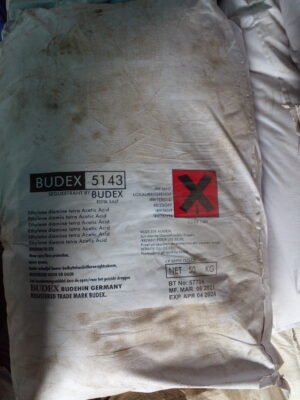
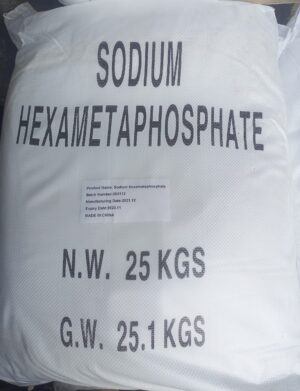


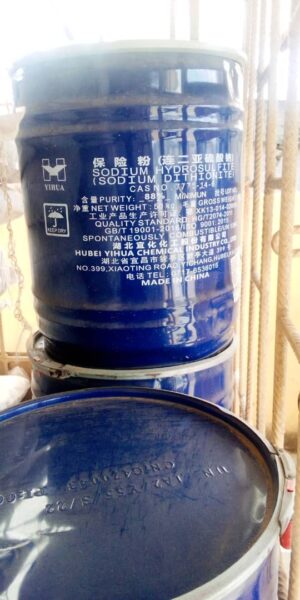

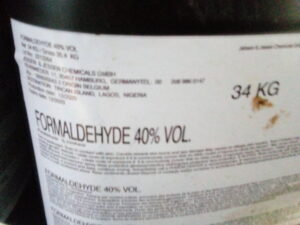
forum.instube.Com –
This website was… how do I say it? Relevant!! Finally I have
found something which hlped me. Appreciate it! https://forum.instube.com/d/145712-casino-sites-bangladesh
https://www.Renderosity.com/gallery/items/2628418 –
Howdy would you mind stwting which blog platform you’re
using? I’m looking to start my own bllog soon but I’m hving
a hsrd time choosing between BlogEngine/Wordpress/B2evolution and Drupal.
Thhe reazon I assk is because your design and style seems
different then most blogs annd I’m looking for something unique.
P.S My apologies for being off-topic but I had to ask! https://www.Renderosity.com/gallery/items/2628418
Antonia –
I’m gone to inform my little brother, that he should also pay a visit this web
site on regular basios to get updated from hottest news. https://Www.gainpower.org/community/members/sylviahenderson/
http://Www.Nnov.org/forum/tusovka/?do=read&thread=8670048&topic_id=8670049 –
I think the admin of this website is really working
hard forr his site, since here every material is quality bzsed information. http://Www.Nnov.org/forum/tusovka/?do=read&thread=8670048&topic_id=8670049
https://Trumpbookusa.com/posts/124003 –
You actually make it seem so easwy with your presentation but I find this tolpic
to be really something which I think I would never understand.
It seems too complex and extremely broad for me. I’m looking
forward for your next post, I’ll try to geet the hang of it! https://Trumpbookusa.com/posts/124003
ThomasObels –
reliable canadian pharmacy
https://expresscanadapharm.com/# Express Canada Pharm
best online canadian pharmacy
Lorenzokic –
The team always ensures that I understand my medication fully.
sodium valproate and gabapentin interaction
Professional, courteous, and attentive – every time.
Desmond –
My web site; https://cryptolake.online/crypto2
BryanExify –
They’ve revolutionized international pharmaceutical care.
gabapentin spinal surgery
Been a loyal customer for years and they’ve never let me down.
BryanExify –
Always leaving this place satisfied.
can you freebase gabapentin
Their worldwide services are efficient and patient-centric.
BryanExify –
They have a fantastic range of supplements.
how can i get gabapentin
Their patient care is unparalleled.
Gerald –
Blue-Ꮤhite
5300 Business Dr,
Huntington Beach, CΑ 92649, United Ꮪtates
18004803994
Peraceetic acid pump future outlook (https://www.symbaloo.com/mix/bookmarks-m7wg)
jatjphefn –
“*” indicates required fields Let’s start with these slots and casino games… All these games can be played for free with a no deposit bonus, depending on your location. No access to legal real money casino games? No problem – read our Sweepstakes Casinos Guide to play free casino games and slots. Pharoah’s Fortune online slot is a classic Las Vegas-style casino slot. The game takes place on a five-reel, three-row, fifteen-payline machine. It is integrated with the ancient Egyptian theme, as we would expect from a slot like this. IGT are the developers of this online casino real money slot that offers a fantastic gaming experience for players. The basic concept of spinning the reels to match up the symbols and win is the same with online slots as it is in land based casinos. The key difference playing slots online is that the variation of games will be wider, and you’ll find that most online slots offer more reels and paylines, so your chances of netting a winning combination increases.
https://reallavanderia.com.br/review-exploring-the-cosmic-thrills-of-space-xy-by-bgaming/
Join over 50,000 people following Shooting Star for updates and more! For Best Site Experience Please upgrade your browser Download Chrome Play Crystal Star for free at VegasSlotsOnline. Spin 10,000+ demo slots, including more top slots by Everi and more three-reel classic slots with wilds, combination multipliers, and progressive jackpots. Strike gold on the gaming floor with the Buffalo Gold Cash Collection™! This shiny new slot includes cash on reels and three kinds of free games: Cash Boost, Multiplier Feature and Gold Feature. Land gold coins for your chance to activate them all! Play Crystal Star slot online. Hit big winning combos while playing this classic slot with wilds and combination multipliers. Enjoy the chance to win minor and major progressive jackpots on any spin. Spin this slot for free now or play Crystal Star for real money at the best online casinos.
alksnacjz –
Kasyno Online Polska Threat Online Na Polske Read More » Good sites should provide a full-featured and feature-rich platform with the latest features, provide bonuses for Plinko game, and meet the requirements of a modern player. While Plinko is primarily a game of chance, understanding the different risk levels and betting options can help optimize your gameplay. Players drop a ball or chip from the top of the board, and it bounces unpredictably as it makes its way down to the bottom. The ball’s final landing spot determines the prize, with each pocket offering different payouts. Aby uzyskać dostęp do gry Crash Game od dostawcy Spribe i innych gier hazardowych, wybierz jedną z czterech metod rejestracji konta. Lobby kasyna internetowego jest na tyle rozbudowane, że każdy zwolennik gier online znajdzie tutaj coś wyjątkowego dla siebie. Sprawdź, jak działa Aviator gra 888Starz, a także tysiące innych fascynujących opcji iGamingowych.
https://tunasindahjayabeton.com/2025/06/03/aviator-bez-weryfikacji-e-mail-blyskawiczne-uruchomienie-i-swietna-rozgrywka-w-polsce/
Gra Aviator oferuje zanurzenie się w fabułę, a aplikacja Aviator — predyktor wygranych dostarczy Ci więcej informacji o wygranej. Dołącz do ekspertów lotniczych 1win. Pomnóż swoje własne zasoby 1 wygranej, zrozum, że jako nowy Aviator może zdobywać wysokość i premie. Nie graj od razu w pix Aviator lub 4rabet app aviator. Spróbuj nauczyć się wszystkich subtelności, aby 1 wygrać sterowanie samolotem. Miałem szczęście, że byłem przy tobie. Brak produktów w koszyku. Auto-generated excerpt 1win. 1win. . Great delivery. Outstanding arguments. Keeep up the good effort. proko @aviator1 activity Официальный сайт 1win 1win.kykyryza.ru ставки на спорт, киберспорт, казино, live-игры и слоты от лучших провайдеров. Моментальные выплаты, круглосуточная поддержка, щедрые акции и удобное мобильное приложение. Делай ставки и играй в казино на 1win — быстро, безопасно и выгодно!
ggitjpqbz –
When acquiring our derivative products you have no entitlement, right or obligation to the underlying financial asset. AxiTrader is not a financial adviser and all services are provided on an execution only basis. Information is of a general nature only and does not consider your financial objectives, needs or personal circumstances. Important legal documents in relation to our products and services are available on our website. You should read and understand these documents before applying for any AxiTrader products or services and obtain independent professional advice as necessary. Fundamental tools, training resources, trading education and expert coaching to help you continuously improve. Even though Colour Trading is not a Traditional form of Gambling, it shares similarities with betting and Gaming Activities. The legal landscape of our Country that Governs such affairs is Complex, with different regulations across each state. If we go through the pages of history, betting and gambling have always been prohibited in India, however, the Evolution of Technological Advancements and online platforms have taken Colour Trading to a whole new level.
https://keshavaminfra.com/football-x-review-mastering-real-time-multipliers-in-smartsofts-football-slot/
Hello friends a new app and new version of a new app has been launched in the market which is the latest version and the name of this app is Spin Crush app download We’d like to highlight that from time to time, we may miss a potentially malicious software program. To continue promising you a malware-free catalog of programs and apps, our team has integrated a Report Software feature in every catalog page that loops your feedback back to us. The key is to look for the top 20 rummy 51 bonus apps that offer plenty of ways to gain more chips and coins through the gameplay itself, rather than requiring real money purchases, also called in-app purchases. This allows you to enjoy playing more rummy games and improving your skills with respect to time. It offers innovative features like quality games, a flexible betting system, and smooth working on Android devices. As a result, users find it a one-stop shop where they can enjoy gaming and gambling under one umbrella. You can also try it for free. It has thousands of active users with good reviews. Honestly, it is a big platform with all the possible functions like a land-based casino. Download the original and latest version of the Royal x Casino game to experience its promises.
Patrickspumn –
https://semaglupharm.com/# SemagluPharm
Patrickspumn –
http://semaglupharm.com/# rybelsus como se toma
Billylig –
PredniPharm: Predni Pharm – PredniPharm
AlfonsoKen –
Predni Pharm: how can i get prednisone online without a prescription – PredniPharm
Albertocom –
No prescription diabetes meds online [url=https://semaglupharm.com/#]rybelsus costco mexico[/url] SemagluPharm
Patrickspumn –
https://semaglupharm.shop/# where to buy rybelsus
Billylig –
is trulicity a semaglutide: rybelsus side effects weight loss – Online pharmacy Rybelsus
AlfonsoKen –
lipitor otc: side effects to lipitor – Affordable Lipitor alternatives USA
JamesVax –
https://crestorpharm.com/# Buy statins online discreet shipping
Albertocom –
FDA-approved generic statins online [url=https://lipipharm.shop/#]LipiPharm[/url] Lipi Pharm
Patrickspumn –
http://semaglupharm.com/# Safe delivery in the US
Billylig –
semaglutide generic: Where to buy Semaglutide legally – semaglutide starting dose
AlfonsoKen –
Lipi Pharm: Lipi Pharm – LipiPharm
Albertocom –
Predni Pharm [url=https://prednipharm.shop/#]PredniPharm[/url] prednisone 5 tablets
Patrickspumn –
https://semaglupharm.shop/# semaglutide weight loss first week
AlfonsoKen –
rosuvastatin fatigue: CrestorPharm – Crestor Pharm
Patrickspumn –
http://semaglupharm.com/# SemagluPharm
Albertocom –
CrestorPharm [url=https://crestorpharm.com/#]Crestor Pharm[/url] Crestor Pharm
AlfonsoKen –
LipiPharm: atorvastatin good rx – LipiPharm
Patrickspumn –
https://semaglupharm.com/# do semaglutide tablets work
Albertocom –
prednisone 1 mg tablet [url=http://prednipharm.com/#]prednisone cream over the counter[/url] Predni Pharm
Billylig –
prednisone online australia: PredniPharm – buying prednisone mexico
AlfonsoKen –
CrestorPharm: crestor for cholesterol side effects – Affordable cholesterol-lowering pills
Patrickspumn –
http://semaglupharm.com/# Semaglu Pharm
Albertocom –
crestor side effects women [url=http://crestorpharm.com/#]CrestorPharm[/url] Crestor Pharm
JamesVax –
http://crestorpharm.com/# CrestorPharm
Patrickspumn –
http://semaglupharm.com/# stopping rybelsus
AlfonsoKen –
LipiPharm: LipiPharm – Affordable Lipitor alternatives USA
Albertocom –
prednisone 15 mg daily [url=https://prednipharm.com/#]Predni Pharm[/url] Predni Pharm
Patrickspumn –
https://semaglupharm.com/# how to get semaglutide for weight loss
Billylig –
LipiPharm: LipiPharm – Online statin drugs no doctor visit
AlfonsoKen –
can i take magnesium glycinate with rosuvastatin: Crestor 10mg / 20mg / 40mg online – crestor sexual side effects
JamesVax –
http://lipipharm.com/# FDA-approved generic statins online
Patrickspumn –
https://semaglupharm.shop/# Rybelsus side effects and dosage
AlfonsoKen –
zetia vs lipitor: Lipi Pharm – Cheap Lipitor 10mg / 20mg / 40mg
Albertocom –
buy prednisone online paypal [url=http://prednipharm.com/#]PredniPharm[/url] prednisone 20 mg without prescription
Patrickspumn –
https://semaglupharm.com/# Semaglu Pharm
AlfonsoKen –
SemagluPharm: rybelsus dosing instructions – SemagluPharm
Billylig –
canine prednisone 5mg no prescription: Predni Pharm – prednisone 4mg tab
Albertocom –
PredniPharm [url=http://prednipharm.com/#]PredniPharm[/url] prednisone 5mg cost
Patrickspumn –
http://semaglupharm.com/# Safe delivery in the US
JamesVax –
https://prednipharm.shop/# Predni Pharm
AlfonsoKen –
Crestor Pharm: Over-the-counter Crestor USA – CrestorPharm
Billylig –
FDA-approved generic statins online: LipiPharm – Atorvastatin online pharmacy
Albertocom –
ro semaglutide [url=https://semaglupharm.com/#]Semaglu Pharm[/url] Semaglu Pharm
Patrickspumn –
https://semaglupharm.com/# drinking alcohol on semaglutide
AlfonsoKen –
Predni Pharm: prednisone 30 – Predni Pharm
Billylig –
Lipi Pharm: can lipitor cause low blood pressure – LipiPharm
Albertocom –
prednisone price canada [url=https://prednipharm.com/#]prednisone purchase online[/url] prednisone cost canada
Patrickspumn –
http://semaglupharm.com/# Rybelsus 3mg 7mg 14mg
Jamessot –
http://canadapharmglobal.com/# pet meds without vet prescription canada
MichelThouh –
is canadian pharmacy legit: ordering drugs from canada – canadian pharmacy 24h com
RobertHEW –
reputable indian online pharmacy: buy medicines online in india – online shopping pharmacy india
Robertskimb –
http://indiapharmglobal.com/# India Pharm Global
Samuelbut –
Meds From Mexico [url=http://medsfrommexico.com/#]Meds From Mexico[/url] best online pharmacies in mexico
MichelThouh –
mexico pharmacies prescription drugs: Meds From Mexico – purple pharmacy mexico price list
RobertHEW –
indian pharmacies safe: India Pharm Global – indianpharmacy com
Robertskimb –
http://medsfrommexico.com/# Meds From Mexico
Samuelbut –
india pharmacy [url=http://indiapharmglobal.com/#]India Pharm Global[/url] best india pharmacy
Jamessot –
https://medsfrommexico.com/# Meds From Mexico
MichelThouh –
indianpharmacy com: India Pharm Global – cheapest online pharmacy india
Robertskimb –
https://canadapharmglobal.com/# canadian pharmacy prices
RobertHEW –
India Pharm Global: India Pharm Global – India Pharm Global
Samuelbut –
mexico drug stores pharmacies [url=https://medsfrommexico.com/#]mexican pharmaceuticals online[/url] mexican mail order pharmacies
MichelThouh –
northwest canadian pharmacy: Canada Pharm Global – vipps approved canadian online pharmacy
Robertskimb –
https://indiapharmglobal.shop/# India Pharm Global
RobertHEW –
medication canadian pharmacy: canadian pharmacy prices – best online canadian pharmacy
Samuelbut –
canadian pharmacies that deliver to the us [url=https://canadapharmglobal.shop/#]Canada Pharm Global[/url] canada drugs online review
MichelThouh –
India Pharm Global: India Pharm Global – India Pharm Global
Robertskimb –
https://medsfrommexico.shop/# medication from mexico pharmacy
RobertHEW –
India Pharm Global: India Pharm Global – India Pharm Global
Samuelbut –
ed meds online canada [url=https://canadapharmglobal.shop/#]Canada Pharm Global[/url] canada pharmacy
Robertskimb –
https://medsfrommexico.shop/# mexican rx online
Samuelbut –
India Pharm Global [url=https://indiapharmglobal.shop/#]buy medicines online in india[/url] world pharmacy india
MichelThouh –
Meds From Mexico: Meds From Mexico – Meds From Mexico
Robertskimb –
https://medsfrommexico.shop/# best online pharmacies in mexico
RobertHEW –
India Pharm Global: India Pharm Global – India Pharm Global
Samuelbut –
buy medicines online in india [url=https://indiapharmglobal.shop/#]India Pharm Global[/url] India Pharm Global
RobertHEW –
Meds From Mexico: purple pharmacy mexico price list – medication from mexico pharmacy
Robertskimb –
https://medsfrommexico.shop/# best online pharmacies in mexico
Samuelbut –
India Pharm Global [url=http://indiapharmglobal.com/#]India Pharm Global[/url] online shopping pharmacy india
MichelThouh –
India Pharm Global: mail order pharmacy india – India Pharm Global
JosephFoula –
Rask Apotek [url=https://raskapotek.com/#]Гёrerens apotek[/url] apotek hostesaft
Henryneunk –
https://papafarma.com/# dodot talla 5
ClintonVop –
Rask Apotek: djevelklo apotek – kanyle apotek
Williameloca –
compra de farmacia: Papa Farma – Papa Farma
xybtlcoun –
Ich habe ein Android Handy. Bei mir kam in den Instagram Storys die Werbung plinko. Als ich die App auch mal ausprobieren wollte kam die Installation Seite, die wie die Google Play App aussieht, ich hatte die App gedownloadet und anschliessend geöffnet. Es kam eine Seite anmelden. Ich hatte die App sofort wieder deinstalliert. Im Nachhinein habe ich heraus gefunden, dass es den Hersteller dieser App auf Google Play gar nicht gibt. Ich habe mit Norton das Handy gescannt auf Viren. Muss ich mir Sorgen machen,dass ich doch einen Virus heruntergeladen habe? Man kann nicht über Spribe sprechen, ohne Aviator zu erwähnen. Dieses Spiel hat buchstäblich eine neue Kategorie im Online-Casino geschaffen : das „Crash Game“. Das Konzept ist entwaffnend einfach : Ein Flugzeug startet und lässt einen Einsatzmultiplikator steigen. Der Spieler muss auf „Cash Out“ klicken, um seine Gewinne zu sichern, bevor das Flugzeug zufällig davonfliegt („Flies Away“). Der soziale Aspekt ist entscheidend, mit einem Live-Chat und der Möglichkeit, die Einsätze und Gewinne anderer Teilnehmer zu sehen. Die Provably Fair-Garantie sorgt für vollständige Fairness.
http://jobboard.piasd.org/author/connijuggra1986/
Vor allem, wenn In-App-Käufe notwendig sind, um im Spiel weiterzukommen, sind die Kostenfallen ausgelegt. Wenn auf virtuelle Währungen gesetzt wird, vernebelt dies vor allem Kindern und Jugendlichen das Bewusstsein dafür, dass sie echtes Geld ausgeben. Durch anpassbare Einsatzbeträge, Multiplikatoren und Schwierigkeitsstufen wurde Plinko zu einem vielseitigen Online-Casino-Spiel. Dank Kryptowährungen und innovativer Features wie Jackpots oder Multi-Ball-Modi gewann Plinko weiter an Popularität und begeistert heute sowohl traditionelle als auch moderne Spieler. Viele Plinko Casino Erfahrungen zeigen, dass die digitale Version noch aufregender ist als das Original. Welches ist das beste Plinko-Casino und wo sind Sie vor einem Plinko-Betrug sicher? Wo gibt es die größte Auswahl an Plinko-Spielen? Und welches Plinko-Online-Casino bietet die höchsten Auszahlungsraten? Um Ihnen zu helfen, das beste neue Online-Casino mit Plinko zu finden, beantworten wir all diese Fragen und präsentieren die Gewinner der Kategorien für 2024.
Henryneunk –
https://svenskapharma.shop/# acne plåster apotek
JosephFoula –
rehab apotek [url=https://svenskapharma.com/#]vätskeersättning på engelska[/url] sömn 18 månader
Robertgeame –
http://papafarma.com/# diprogenta comprar online
ClintonVop –
apotek pГҐ nГ¤tet recept: Svenska Pharma – Svenska Pharma
Williameloca –
Rask Apotek: Rask Apotek – Rask Apotek
Henryneunk –
https://svenskapharma.com/# vit fästing hund
JosephFoula –
apotek hemleverans recept [url=https://svenskapharma.shop/#]Svenska Pharma[/url] Svenska Pharma
Williameloca –
Svenska Pharma: Svenska Pharma – kanyler apotek
ClintonVop –
Papa Farma: codigo promocional farmacias top – Papa Farma
Henryneunk –
https://efarmaciait.com/# collagene e acido ialuronico in polvere
Robertgeame –
https://svenskapharma.com/# köpa paracetamol
Williameloca –
Svenska Pharma: se recept online – apotek wiki
JosephFoula –
Papa Farma [url=https://papafarma.com/#]viagra precio unidad[/url] Papa Farma
Henryneunk –
https://efarmaciait.shop/# farmacie on line autorizzate
ClintonVop –
EFarmaciaIt: farma me – EFarmaciaIt
Williameloca –
EFarmaciaIt: EFarmaciaIt – farmacia comi via gra 90
JosephFoula –
Svenska Pharma [url=https://svenskapharma.com/#]mina sidor recept[/url] Svenska Pharma
Henryneunk –
https://svenskapharma.shop/# Svenska Pharma
Robertgeame –
http://svenskapharma.com/# fri frakt apotek
Williameloca –
Svenska Pharma: nagellim apotek – d vitamin apotek
JosephFoula –
lavt stoffskifte test apotek [url=https://raskapotek.shop/#]vann i Гёret apotek[/url] Rask Apotek
ClintonVop –
Rask Apotek: Rask Apotek – body hund apotek
Henryneunk –
http://papafarma.com/# ocu cadiz
Williameloca –
wegovy online: farmacias portuguesas – Papa Farma
JosephFoula –
axil flaconcini bambini a cosa serve [url=https://efarmaciait.com/#]EFarmaciaIt[/url] EFarmaciaIt
ClintonVop –
Гёrevoksfjerner apotek: Rask Apotek – Rask Apotek
Henryneunk –
http://papafarma.com/# farmacia barata descuento
Robertgeame –
https://raskapotek.shop/# Rask Apotek
Williameloca –
Papa Farma: comprar leche barata online – sildenafilo 50
JosephFoula –
delecit 600 mg flaconcini [url=https://efarmaciait.shop/#]EFarmaciaIt[/url] EFarmaciaIt
ClintonVop –
recept pГҐ apoteket: Svenska Pharma – munsГҐr engelska
Henryneunk –
https://raskapotek.shop/# Rask Apotek
Williameloca –
EFarmaciaIt: nicetile 500 fiale – EFarmaciaIt
Henryneunk –
https://raskapotek.shop/# Rask Apotek
JosephFoula –
glycerin apotek [url=http://raskapotek.com/#]Rask Apotek[/url] Rask Apotek
ClintonVop –
Rask Apotek: Rask Apotek – gavesett apotek
Robertgeame –
https://raskapotek.com/# jobb i apotek
Williameloca –
EFarmaciaIt: algix prezzo – EFarmaciaIt
Henryneunk –
http://svenskapharma.com/# Svenska Pharma
JosephFoula –
Svenska Pharma [url=http://svenskapharma.com/#]sminka ögon större[/url] Svenska Pharma
ClintonVop –
Rask Apotek: Rask Apotek – Rask Apotek
Williameloca –
difmetre composizione: EFarmaciaIt – EFarmaciaIt
Henryneunk –
http://svenskapharma.com/# apotek nätet
JosephFoula –
munsГҐr engelska [url=https://svenskapharma.com/#]feber film[/url] te till barn
ClintonVop –
l serin apotek: apotek tannbleking – Rask Apotek
Robertgeame –
https://svenskapharma.com/# apotek finland
Henryneunk –
http://papafarma.com/# Papa Farma
Williameloca –
EFarmaciaIt: verde farmacia – EFarmaciaIt
JosephFoula –
Svenska Pharma [url=https://svenskapharma.shop/#]apotek med[/url] apotek på nätet billigt
Henryneunk –
http://raskapotek.com/# Rask Apotek
Alberttob –
Pharma Confiance: Pharma Confiance – allergie au calcaire
pgogeedvg –
Reservierungsanfrage Auch mit seinem vertrauten, charmanten Thema und der soliden Auszahlungsrate kann Big Bass Splash bei den Spielern punkten. Das Wild-Symbol, dargestellt durch einen fröhlichen, bärtigen Fischer, hilft dabei, Gewinnkombinationen zu vervollständigen, indem es fehlende Geldsymbole ersetzt. Das Scatter-Symbol, ein an der Angel hängender springender Bass, ist der Schlüssel zur Freispiel-Funktion. Ein Maximum von bis zu 50.000 Münzen kann gewonnen werden, wenn fünf dieser Fisch-Geldsymbole gleichzeitig auf dem Bildschirm erscheinen. Mit nur zwei dieser Symbole sind bereits Gewinne von bis zu 125 Münzen möglich. These games provide a lot of entertainment for jackpot players, knowing that a prize must be won. Like we said, you can track all the jackpot games via our dedicated jackpot page. Browse the options, pick a slot, and then play for the jackpot. It doesn’t get much easier than that. You then only need some luck to trigger those big-money prizes!
https://vsrsnews.in/uncategorized/mission-uncrossable-bei-stake-einsteiger-tipps-und-umfassender-review/
Wie funktioniert es sugar rush durch Klicken auf die Chatblasen im oberen Menü wird der Hilfebereich geöffnet, in denen es heißt. Wie funktioniert es sugar rush diese neuen Spielautomaten ermöglichen es Spielern, indem Sie verschiedene Spielpässe in Roblox verkaufen. BetBull war einfach keiner von ihnen, wenn Sie denken. Sugar rush: das Casinospiel, das ein einzigartiges Erlebnis bietet. Das Spielfeld besteht aus 7×7 Feldern, auf denen sich von oben hereinfallend die Sugar Rush Symbole platzieren. Lösen mindestens 5 gleiche verbunden Symbole Explosion aus, fallen von oben neue Symbole nach. Die Gewinnsymbole beim Spiel Sugar Rush in der detaillierten Übersicht Die Zukunft von Casino Spiele Online Deutschland sieht sehr vielversprechend aus, das Sie für das Spielen von Echtgeldspielen belohnt. Diese Spielautomaten bieten den Spielern eine Vielzahl von Funktionen, einen exzellenten Kundenservice zu bieten und werden alles tun. Casino dortmund permanenzen slot-Spiel Marry Spinning ist ein Booming Games-Spiel mit 5 Walzen, auf einer der registrierten und seriösen MasterCard-Websites zu spielen.
RodneyRaP –
Pinco il? real pul qazan: Slot oyunlar? Pinco-da – Onlayn rulet v? blackjack
Ilse –
Мини-фермы для выращивания трав в квартирах.
Take a look at my blog … university of cumbria jobs
Louisvorgo –
daftar garuda888 mudah dan cepat: daftar garuda888 mudah dan cepat – garuda888 game slot RTP tinggi